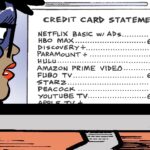 “Data-Driven Thinking” is written by members of the media community and contains fresh ideas on the digital revolution in media.
“Data-Driven Thinking” is written by members of the media community and contains fresh ideas on the digital revolution in media.
Today’s column is written by Andrew Casale, vice president of strategy at Casale Media Inc.
When I first wrote about deal ID more than two years ago, it was a simple idea with an uncertain future that just starting to gain traction.
Deal ID has since risen in visibility, implementation and ubiquitous adoption. It’s become a method major agencies and publishers are expected to know. Heck, there have been entire conference panels built on the topic.
Deal ID combines the efficiency and scale of the exchange with negotiated criteria that inform and guide direct buys by bringing the human element into the fold.
The problem with deal ID is that everyone hates its cumbersome nature. But there is help on the way in the form of a concerted effort amongst both buy- and sell-side technology platforms to address its faults.
The protocol has introduced friction that no one wants to experience in the programmatic marketplace. Programmatic is supposed to bring automation and ease to ad buys, but the process of executing a deal ID is at times even more arduous than the old IO. As it stands, the publisher creates a deal ID, a unique number, and passes it manually to the buyer via a spreadsheet or email. Then the buyer manually inserts the number into their DSP to execute the buy.
Assuming nothing goes wrong in the act of setting up a deal ID – and things often do go wrong – the real problems start. I think many publishers can relate to the all-too-common scenario of multiple phone calls and emails to get a Deal ID set up, only to see $10 in daily bid activity against it. Certainly this does not characterize all deals. Some are actually quite worth both parties’ time but the trouble today is that it is very difficult to ascertain ahead of time whether the results will justify the effort. Neither the buy side nor the supply side is happy with today’s status quo.
From the buy side, the problem is that with deal ID alone, there is no audience discovery. Both parties work to set up a deal ID and get it working on a technical level, but in some cases it never has a chance to create value because their brand’s audience isn’t even on the publisher site with whom the buyer has just set up the deal. Buyers use DSPs to map out specific audiences. Then they reach out to publishers to set up the deals they think they want. But in some cases, the audience target is narrow and the platform bids at a price that doesn’t make good sense for either the buy or sell side. Deal IDs leave too much up to chance. Sometimes they make a perfect match. But more often than not, it’s a mess.
Both sides end up running into problems because the process is so manual. Humans are prone to entering numbers incorrectly. Net new deal buyers have the highest error rate – up to 50%. Those errors ultimately stigmatize deal IDs. Even when the deals bring meaningful revenue, there’s a lot of apprehension and discomfort around just how much can go wrong. In spite of all that, interest in deal ID remains high because it allows for segmenting inventory and data, and trading with select buyers.
Many in the industry are simply resigned to the messy nature of deal IDs. They think we’re stuck with it if they want that added control over their buys. Fortunately, exchanges and DSPs are actively collaborating together on working out a solution that will change everything.
We’re approaching an ideal scenario, one in which the manual process of setting up a deal ID will evolve into an automated system in which the deal can be triggered with the push of a button. No more trading deal IDs between publishers and buyers. That solves one pain point, but the bigger pain point that is also being worked out is deal discovery.
Deal discovery goes beyond identifying which publishers are available for bidding in private exchanges. It facilitates audience overlay among those publishers in advance. The buyer selects his or her brand’s ideal audience targets and then runs a discovery report to identify publishers and packages with a high audience overlap for the brand’s targets. This shows buyers the names of the publishers, which they want, and goes beyond identifying interest in the brand’s core industry and into the specific criteria they need. What’s better, with deal discovery, the chump change deals that everyone wants to avoid show up at the bottom of the list, and the system works in the same environment the buyer already knows: the DSP.
The major DSPs are on the road to building out deal discovery. It’s going to make the current deal ID system seem like a bad dream. The players who can make the change understand the pressure to get it right. We believe they will. Deal IDs are vitally important but are also a hassle. We won’t be stuck with their baggage for long.
Follow Casale Media (@casalemedia) and AdExchanger (@adexchanger) on Twitter.













